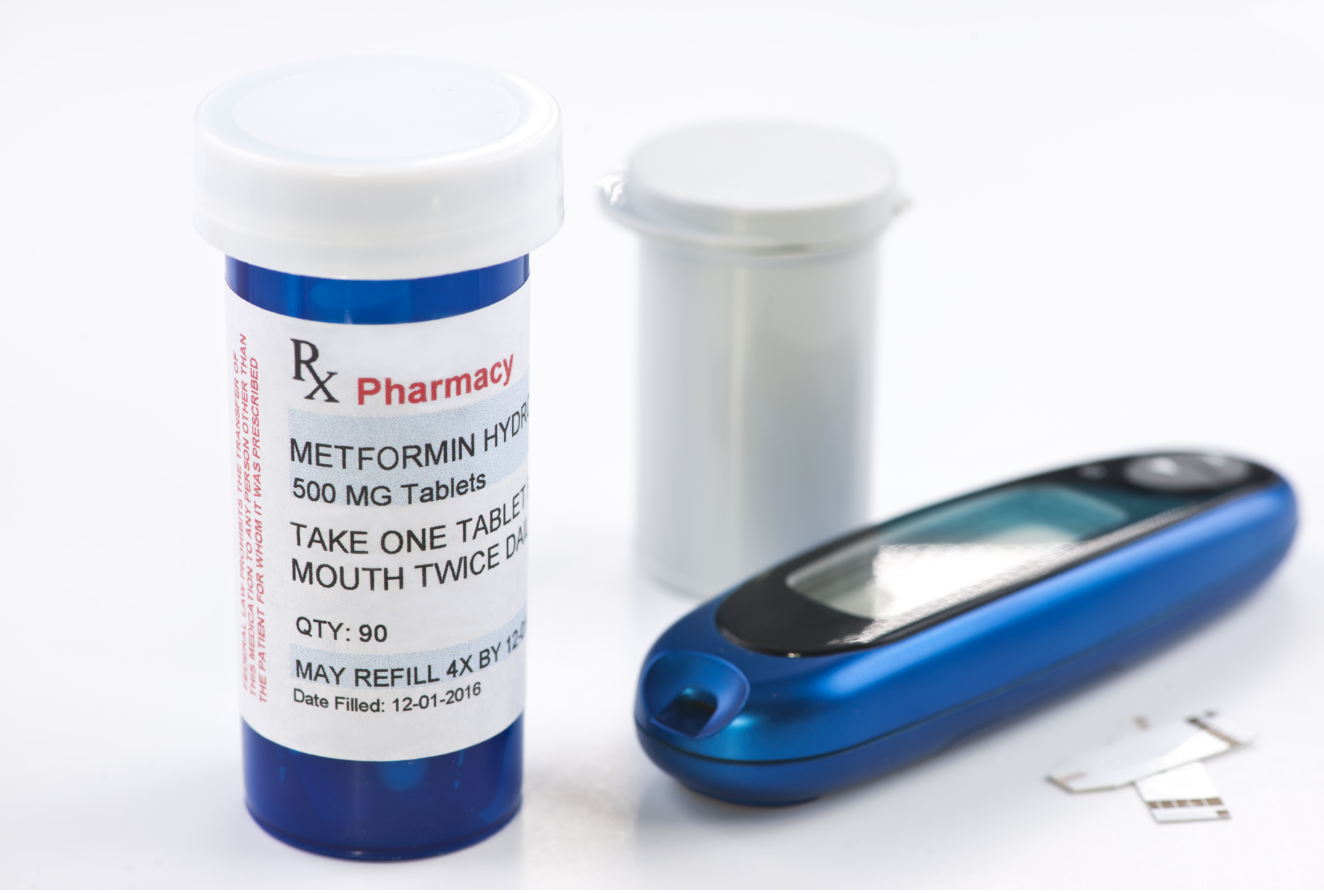If you have been diagnosed with type-2 diabetes or polycystic ovary syndrome (PCOS), there is a good chance that your doctor has talked to you about metformin as a potential treatment option for you. Popular brand names of metformin include Glucophage, Fortamet, Glumetza, and Riomet. With 1.5 million new cases of diabetes each year and many more people at risk for developing diabetes, many patients will receive a new prescription of metformin and will need to be aware of how it works and what the common side effects are. Metformin is a drug prescribed to help control blood glucose levels and restore the body’s response to insulin. Like with taking any medication, it is essential to know the interactions and side effects that may occur.
Metformin For Type 2 Diabetes
Metformin is a drug that is most commonly prescribed to treat prediabetes or type 2 diabetes. Prediabetes occurs when your blood sugar level (glucose) is at a level that is higher than normal but not quite high enough to be diagnosed with diabetes. Metformin helps combat this by slowing glucose release from the liver, slowing down the amount of glucose that the body absorbs and improving the body’s sensitivity to insulin.
Metformin For Polycystic Ovary Syndrome
Polycystic Ovary Syndrome (PCOS) is a hormonal disorder that affects nearly 5 million women in the U.S. It can cause a range of symptoms that can vary from person to person, and patients with PCOS can develop other health problems such as diabetes and heart disease. Like with type 2 diabetes, PCOS can cause higher than normal insulin levels, increasing the risk of diabetes. Currently, there is no cure for PCOS, however, you and your doctor can create a treatment plan to help reduce symptoms. Metformin is one treatment option that can be prescribed to work with your body to normalize insulin levels and may help increase fertility if you are experiencing metabolic abnormalities.
Metformin Side Effects
Like with any medication, there may be some side effects that occur. Some of the side effects include:
- Diarrhea
- Nausea
- Upset stomach
- Metallic taste in the mouth
- Vomiting
- Flatulence
- Weight loss
- Loss of appetite
- Heartburn
- Bloating
- Cough
- Sleepiness
- Constipation
- Headache
- Painful or difficult urination
The most common side effect from metformin, diarrhea, is caused by the medication working directly with your gut. Diarrhea and other side effects usually occurs in the first couple of weeks taking the prescription and there are a few things you can do to reduce this from happening. Talk with your doctor if any of these side effects worsen or become concerning.
How To Avoid Diarrhea On Metformin
The best way to avoid metformin diarrhea is to take the prescription as directed by your medical professional. Commonly, a lower dose will be given at the start to lower the chances of side effects. In the U.S., only 5% of people have to stop taking the medication due to long-term side effects. It is best to take medications with a meal and eat snacks with protein in between doses to reduce gastrointestinal side effects. You may also speak with your doctor about the extended-release version, which is known to cause fewer side effects.
Get Discounts On Prescription Drugs
When prescribed a medication, always talk to your doctor about the potential reactions and side effects of a prescription drug and what actions you can take to lower your risk of side effects. Before going to the pharmacy, make sure you are paying the lowest price for your prescription. Easy Drug Card is a prescription discount card that allows you to compare and receive the lowest price on medications at your local pharmacy. Accepted at over 65,000 pharmacies nationwide, Easy Drug Card makes it free and easy to receive your card and save your hard-earned money. Visit the website to receive your prescription discount card and start saving today!












